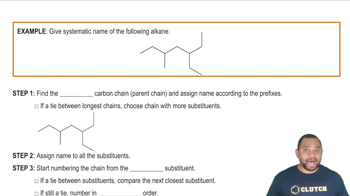Draw the condensed structural or line-angle formula if cyclic, for each of the following:
a. bromocyclopropane
 Verified step by step guidance
Verified step by step guidance Verified video answer for a similar problem:
Verified video answer for a similar problem:



 :49m
:49mMaster Alkyl Halides Concept 1 with a bite sized video explanation from Jules
Start learning